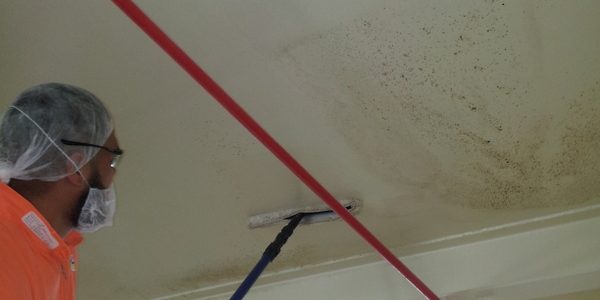Ensuring Safety And Quality
Contamination of produce due to the vast variety of food safety hazards can occur at any step in the supply chain. So, what is Red Line Food Production Cleaning?
Red line food production cleaning is a highly specialised and systematic cleaning process designed to ensure the highest levels of food safety and hygiene within food production environments. This process is crucial in preventing cross-contamination, ensuring compliance with regulatory standards, and maintaining the integrity of the food products.
Key Aspects of Red Line Food Production Cleaning
Segregation and Containment: The red line refers to the critical control boundary within the food production facility where specific hygiene protocols must be strictly observed. This boundary delineates areas that require intensive cleaning from other sections of the facility to prevent cross-contamination.
Hazard Analysis and Critical Control Points (HACCP): The cleaning process is grounded in the principles of HACCP, a systematic preventive approach to food safety. This involves identifying potential hazards (biological, chemical, and physical), determining critical control points where these hazards can be controlled, and implementing rigorous cleaning procedures at these points (Produco) (Assured Food Safety).
Sanitation and Disinfection: The red line cleaning involves the use of advanced sanitation and disinfection methods. This includes applying scientifically formulated cleaning agents and disinfectants that are effective against a wide range of pathogens, including bacteria, viruses, and fungi. These agents are selected based on their efficacy, safety for food contact surfaces, and compliance with regulatory standards such as those outlined by the Ministry for Primary Industries (MPI) in New Zealand.
Validation and Verification: Ensuring the effectiveness of the cleaning process involves regular validation and verification steps. This includes microbiological testing, such as ATP (adenosine triphosphate) testing for organic residues and swab tests for specific pathogens, to confirm that surfaces are hygienically clean. Continuous monitoring and documentation are integral to maintaining compliance and ensuring food safety.
Staff Training and Compliance: Proper training of staff in red line cleaning protocols is essential. This includes training on the correct use of personal protective equipment (PPE), proper cleaning techniques, and understanding the importance of maintaining hygiene standards. Compliance with these protocols is critical and is often enforced through regular audits and inspections (Assured Food Safety).
5 Step Cleaning Process That Meet’s Health & Safety Standards For Red Line Food Production
Creating a 5-step cleaning process that meets the food and safety standards for Red Line Food Production involves ensuring that all surfaces and equipment are sanitised effectively to prevent contamination.
Here is a detailed process:
Preparation and Pre-Cleaning
Area To Clean: Remove any exposed products away from the area, dismantle machineries if required if not use polyurethane covers to cover all tops and seal any openings. Check all electricals are turned off and mask it if needed.
Disassemble Equipment: Take apart all equipment and utensils that can be disassembled to ensure all parts are cleaned thoroughly.
Protective Gear: Ensure all personnel are wearing appropriate personal protective equipment (PPE), including gloves, aprons, and masks.
Detergent Application
Apply Cleaning Agents: Any chemical to be used needs to be MPI and DAIRY approved also safety data sheet to be available at all times this is a FOOD SAFETY requirement.
Apply chemicals with suitable applicator machines and ensure all required PPE are worn correctly refer to MSDS.
Agitate all surfaces affected after chemical application using soft nylon brooms with carbon fibre handles.
Low pressure hot water unit to be used for rinsing down surfaces thoroughly and ensure is chemically free and clean, rinse all floor areas and dry it with squeegees.
Mechanical Action: Scrub surfaces again to ensure the detergent effectively breaks down grease, oils, and other residues.
Rinsing and Inspecting
Rinse Thoroughly: Use potable water to thoroughly rinse off all detergent residues from surfaces and equipment.
Inspection: Conduct a visual inspection to ensure all detergent has been removed and no residue remains. If residue is found, repeat the rinsing process.
Sanitising and Drying
Sanitizer Application: This is one of the most important parts of cleaning is to sanitise all surfaces to ensure that any remaining bacteria or germs are sterilised.
There are different ways to apply the sanitizer but all will have an effective result when applied correctly and carefully.
Ensure all cleaned surfaces are dried completely before application. Use a suitable applicator to apply sanitizer to all surfaces required.
Air Dry: Allow surfaces to air dry completely. Do not use cloths or towels to dry surfaces as they can reintroduce contaminants.
Reassemble Equipment: Once dry, reassemble all disassembled equipment and conduct a final inspection to ensure cleanliness.
Food Hygiene Audit Cleaning
Ensuring Compliance and Quality
Food hygiene audit cleaning is a critical aspect of maintaining food safety standards. Regular audits assess the effectiveness of cleaning practices, identify areas for improvement, and ensure compliance with regulations. At Industrial Cleaning Specialists, we conduct thorough food hygiene audits, providing actionable recommendations to enhance your production line’s cleanliness.
Documentation: Maintain records of the cleaning process, including dates, times, and personnel involved, to ensure traceability and accountability.
Regular Audits: Conduct regular audits and training sessions to ensure compliance with the cleaning process and food safety standards.
By following these steps, Red Line Food Production can ensure that their cleaning processes meet the highest standards of food safety and hygiene.
Why Choose Industrial Cleaning Specialists?
Red line food production cleaning is a critical component of maintaining food safety within a production facility. By adhering to scientifically validated cleaning protocols and rigorous monitoring, food production facilities can ensure that their operations meet the highest standards of hygiene and regulatory compliance, thereby protecting both the product and the consumer.
Industrial Cleaning Specialists, have 24/7 emergency support and over 10 years of industry experience. Call us today






